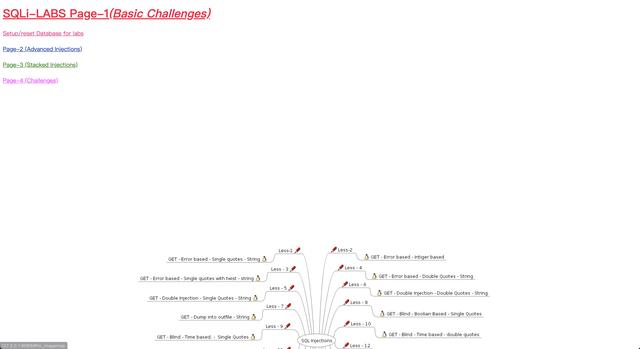Apache IoTDB的SQL操作方法是什么
Apache IoTDB的SQL操作方法是什么
本篇内容介绍了“Apache IoTDB的SQL操作方法是什么”的有关知识,在实际案例的操作过程中,不少人都会遇到这样的困境,接下来就让小编带领大家学习一下如何处理这些情况吧!希望大家仔细阅读,能够学有所成!
存储组操作
# 创建存储组IoTDB> set storage group to root.turbine#查询存储组IoTDB> SHOW STORAGE GROUP+-------------+|storage group|+-------------+| root.turbine|+-------------+#删除存储组IoTDB> delete storage group root.turbine
创建时间序列
createtimeseriesroot.turbine.d1.s1(temperature1)withdatatype=FLOAT,encoding=GORILLA,compression=SNAPPYtags(unit=degree,owner=user1)attributes(description=mysensor1,location=BeiJing)createtimeseriesroot.turbine.d1.s2(temperature2)withdatatype=FLOAT,encoding=GORILLA,compression=SNAPPYtags(unit=degree,owner=user1)attributes(description=mysensor2,location=TianJin)createtimeseriesroot.turbine.d2.s1(temperature1)withdatatype=FLOAT,encoding=GORILLA,compression=SNAPPYtags(unit=degree,owner=user2)attributes(description=mysensor3,location=HeBei)
上边注册的序列可视化就是下边这个图了(手画的。。目前没可视化功能)
为了实际应用中使用更方便,除了时间序列的路径和编码等基本信息外,我们增加了测点别名、标签、属性三个概念。标签和属性总大小在配置文件中 tag_attribute_total_size 设置。
别名:测点的别名,可以和测点名一样用来读写,可以不设置。
标签:key=value 形式,可以通过标签反向查询时间序列元数据,比如,单位和拥有者,标签会常驻内存。目前只能给定一个 tag 查询条件,可精确查询和模糊查询。
属性:key=value 形式,只能根据时间序列路径展示出属性信息,如描述信息和位置。如果没有反向查询的需求,建议定义成属性。
#插入更新别名、标签、属性ALTERtimeseriesroot.turbine.d1.s1UPSERTALIAS=newAliasTAGS(unit=Degree,owner=me)ATTRIBUTES(description=ha,newAttr=v1)#删除时间序列deletetimeseriesroot.turbine.d2.s1
根据路径和标签查询序列元数据
# 查询所有时间序列数据IoTDB> show timeseries+------------------+------------+-------------+--------+--------+-----------+-----------+--------+-----+------+| timeseries| alias|storage group|dataType|encoding|compression|description|location|owner| unit|+------------------+------------+-------------+--------+--------+-----------+-----------+--------+-----+------+|root.turbine.d1.s1|temperature1|root.turbine|FLOAT|GORILLA|SNAPPY|mysensor1|BeiJing|user1|degree||root.turbine.d1.s2|temperature2|root.turbine|FLOAT|GORILLA|SNAPPY|mysensor2|TianJin|user1|degree||root.turbine.d2.s1|temperature1|root.turbine|FLOAT|GORILLA|SNAPPY|mysensor3|HeBei|user2|degree|+------------------+------------+-------------+--------+--------+-----------+-----------+--------+-----+------+#查询root.turbine.d1前缀路径下的时间序列# 根据 tag 精确查询 owner 为 user1 的序列IoTDB> show timeseries root.turbine.d1IoTDB> show timeseries root.turbine where owner=user1+------------------+------------+-------------+--------+--------+-----------+-----------+--------+-----+------+| timeseries| alias|storage group|dataType|encoding|compression|description|location|owner| unit|+------------------+------------+-------------+--------+--------+-----------+-----------+--------+-----+------+|root.turbine.d1.s1|temperature1|root.turbine|FLOAT|GORILLA|SNAPPY|mysensor1|BeiJing|user1|degree||root.turbine.d1.s2|temperature2|root.turbine|FLOAT|GORILLA|SNAPPY|mysensor2|TianJin|user1|degree|+------------------+------------+-------------+--------+--------+-----------+-----------+--------+-----+------+#根据tag模糊查询owner的value中包含'user'的序列IoTDB> show timeseries where owner contains 'user'+------------------+------------+-------------+--------+--------+-----------+-----------+--------+-----+------+| timeseries| alias|storage group|dataType|encoding|compression|description|location|owner| unit|+------------------+------------+-------------+--------+--------+-----------+-----------+--------+-----+------+|root.turbine.d1.s1|temperature1| root.turbine| FLOAT| GORILLA| SNAPPY| mysensor1| BeiJing|user1|degree||root.turbine.d1.s2|temperature2| root.turbine| FLOAT| GORILLA| SNAPPY| mysensor2| TianJin|user1|degree||root.turbine.d2.s1|temperature1| root.turbine| FLOAT| GORILLA| SNAPPY| mysensor3| HeBei|user2|degree|+------------------+------------+-------------+--------+--------+-----------+-----------+--------+-----+------+
查看某个路径的孩子节点
IoTDB> show child paths root.turbine+---------------+| child paths|+---------------+|root.turbine.d1||root.turbine.d2|+---------------+
统计时间序列数量
# 统计所有时间序列数量IoTDB> count timeseries+-----+|count|+-----+| 3|+-----+#分组统计时间序列,root为第0层IoTDB> count timeseries group by level=2+---------------+-----+| column|count|+---------------+-----+|root.turbine.d1| 2||root.turbine.d2| 1|+---------------+-----+
查询所有设备
也就是查询倒数第二层节点的路径
IoTDB>showdevices+---------------+|devices|+---------------+|root.turbine.d1||root.turbine.d2|+---------------+
DML 数据操作语言
参考文档:
http://iotdb.apache.org/UserGuide/Master/Operation%20Manual/DML%20Data%20Manipulation%20Language.html
数据写入
一次可以写入一个设备、一个时间戳、多个测点的值。
insertintoroot.turbine.d1(timestamp,s1,s2)values(1,1,2);insertintoroot.turbine.d1(timestamp,s1,s2)values(2,1,2);insertintoroot.turbine.d1(timestamp,s1,s2)values(3,1,2);insertintoroot.turbine.d1(timestamp,s1,s2)values(4,1,2);insertintoroot.turbine.d1(timestamp,s1,s2)values(5,1,2);insertintoroot.turbine.d1(timestamp,s1,s2)values(6,1,2);insertintoroot.turbine.d1(timestamp,s1,s2)values(10,1,2);
数据删除
目前只支持删除一个时间点之前的数据,之后会支持删除任意一段时间的数据。
deletefromroot.turbine.d2.s1wheretime<=10
原始数据查询
接下来就到各种查询啦,最常用的是原始数据查询。
IoTDB>selects1,s2fromroot.turbine.d1+-----------------------------+------------------+------------------+|Time|root.turbine.d1.s1|root.turbine.d1.s2|+-----------------------------+------------------+------------------+|1970-01-01T08:00:00.001+08:00|1.0|2.0||1970-01-01T08:00:00.002+08:00|1.0|2.0||1970-01-01T08:00:00.003+08:00|1.0|2.0||1970-01-01T08:00:00.004+08:00|1.0|2.0||1970-01-01T08:00:00.005+08:00|1.0|2.0||1970-01-01T08:00:00.006+08:00|1.0|2.0||1970-01-01T08:00:00.010+08:00|1.0|2.0|+-----------------------------+------------------+------------------+
单点补空值查询
传感器采集的数据很多时间戳有偏差,时间戳精确查询容易查不到数据,可以用 previous 或者 linear 方式补空值
IoTDB> select s1 from root.turbine.d1 where time = 8+----+------------------+|Time|root.turbine.d1.s1|+----+------------------++----+------------------+#用前边最近的值填过来IoTDB> select s1 from root.turbine.d1 where time = 8 fill(float[previous])+-----------------------------+------------------+| Time|root.turbine.d1.s1|+-----------------------------+------------------+|1970-01-01T08:00:00.008+08:00| 1.0|+-----------------------------+------------------+#如果想限制补值的范围,超过这个范围就不补了,可以再加个参数,要带单位IoTDB> select s1 from root.turbine.d1 where time = 8 fill(float[previous,1ms])+-----------------------------+------------------+| Time|root.turbine.d1.s1|+-----------------------------+------------------+|1970-01-01T08:00:00.008+08:00| null|+-----------------------------+------------------+
最新数据查询
为了实时的可视化最新数据,我们单独做了一个最新数据点查询功能。用 select last 关键字作为前缀,其他语法和原始数据一样,不能加谓词过滤。
IoTDB>selectlast*fromroot+-----------------------------+------------------+-----+|Time|timeseries|value|+-----------------------------+------------------+-----+|1970-01-01T08:00:00.010+08:00|root.turbine.d1.s1|1.0||1970-01-01T08:00:00.010+08:00|root.turbine.d1.s2|2.0|+-----------------------------+------------------+-----+
聚合查询
统计时间序列的聚合值,我们目前把各个时间序列都当做独立的序列看待,聚合也是分序列做。下个版本会加上聚合一个路径下所有序列的功能。
IoTDB>selectcount(*)fromrootwheretime<=10+-------------------------+-------------------------+-------------------------+|count(root.turbine.d1.s1)|count(root.turbine.d1.s2)|count(root.turbine.d2.s1)|+-------------------------+-------------------------+-------------------------+|7|7|0|+-------------------------+-------------------------+-------------------------+
0.10.0 降频聚合查询
降频聚合0.10的语法和0.9 的不一样了。首先介绍 0.10.0 版本的降频聚合查询语法,先举个例子,查一个序列今年5月份每天早上9点到12点的平均值,结果应该类似这样的:
5月1日 9点-12点:聚合值
5月2日 9点-12点:聚合值
...
5月31日 9点-12点:聚合值
为了实现这个灵活的查询,需要一个滑动窗口,窗口从5月1日9点开始,长度是3小时,每次往前滑动24小时,滑到5月31日为止,每个窗口内计算一个平均值。
因此我们主要设计了三个参数:
(1)滑动窗口的起始和终止范围,左闭右开区间:5月1日到31日
(2)滑动窗口的长度:3小时
(3)滑动步长:24小时
语句如下(我没写这么多数据,目前查出来都是空):
selectavg(s1)fromroot.turbine.d1groupby([2020-05-01T09:00:00,2020-05-31T12:00:00),3h,24h)
再举一个更简单的例子:查5月份每天的平均值
这个例子里,滑动窗口的长度和滑动步长相等,就可以省掉第三个参数啦:
selectavg(s1)fromroot.turbine.d1groupby([2020-05-01T00:00:00,2020-06-01T00:00:00),1d)
0.10.0 采样补空值
0.10.0 新增的查询功能,在 group by 查询的基础上,如果我们使用 last_value 聚合函数,就是个采样功能了,如果某个时间区间没有值,也可以使用前值补空。
#正常降采样,没数据的区间会填充 nullIoTDB> select last_value(s1) from root.turbine.d1 group by([1,10), 2ms)+-----------------------------+------------------------------+| Time|last_value(root.turbine.d1.s1)|+-----------------------------+------------------------------+|1970-01-01T08:00:00.001+08:00| 1.0||1970-01-01T08:00:00.003+08:00| 1.0||1970-01-01T08:00:00.005+08:00| 1.0||1970-01-01T08:00:00.007+08:00| null||1970-01-01T08:00:00.009+08:00| null|+-----------------------------+------------------------------+#降采样,如果某个区间没值,可以用前一个聚合值补空,填充函数为previousIoTDB> select last_value(s1) from root.turbine.d1 group by([1,10), 2ms) fill(float[previous])+-----------------------------+------------------------------+| Time|last_value(root.turbine.d1.s1)|+-----------------------------+------------------------------+|1970-01-01T08:00:00.001+08:00| 1.0||1970-01-01T08:00:00.003+08:00| 1.0||1970-01-01T08:00:00.005+08:00| 1.0||1970-01-01T08:00:00.007+08:00| 1.0||1970-01-01T08:00:00.009+08:00| 1.0|+-----------------------------+------------------------------+
此外,还支持另一种补空值方式,previousuntillast,使用前值补空,直到补到最新点的时间值为止,就不再补了,比如这里最新点时间戳是10,11和13这两个点就不再补了。
IoTDB>selectlast_value(s1)fromroot.turbine.d1groupby((1,15],2ms)fill(float[previousuntillast])+-----------------------------+------------------------------+|Time|last_value(root.turbine.d1.s1)|+-----------------------------+------------------------------+|1970-01-01T08:00:00.003+08:00|1.0||1970-01-01T08:00:00.005+08:00|1.0||1970-01-01T08:00:00.007+08:00|1.0||1970-01-01T08:00:00.009+08:00|1.0||1970-01-01T08:00:00.011+08:00|1.0||1970-01-01T08:00:00.013+08:00|null||1970-01-01T08:00:00.015+08:00|null|+-----------------------------+------------------------------+
不知道大家注意到没,这句话区间是前开后闭,填出来的结果集也是用的闭区间的时间点。这样就通过 group by fill 语句实现了采样补空值查询。
0.9.x 降频聚合查询
0.9 老版本的降频聚合语法和 0.10 的不一样。主要有这样几个参数
(1)分段间隔,把时间轴按这个长度分成一段一段的
(2)分割原点,从哪个点开始分,可以采用任意一段的端点,默认以 1970年1月1日0点0时0分0秒为切割原点,也就是时间戳的 0
(3)结果集的展示范围
前两个参数固定之后,时间轴的分段就确定了,之后第三个参数指定结果集。
比如,查询5月每天的平均值
selectavg(s1)fromroot.turbine.d1groupby(1d,2020-05-0100:00:00,[2020-05-0100:00:00,2020-05-3123:59:59]);
按设备对齐查询
通过上边的例子我们可以看到,IoTDB 查询的默认表结构是【time,序列1,序列2,...,序列n】,所有序列会按照 time 对齐,如果存在某个序列在一个时间点不存在,会补空值,在做值过滤时候,这种表结构的过滤也会很严格。
为了使得各个设备查询时不互相影响,我们支持按time 和设备对齐查询,表结构为【time,设备ID,测点1,测点2,...,测点n】,这种就和关系表结构比较像了,只需要在查询语句后加 align by device
IoTDB>select*fromrootalignbydevice+-----------------------------+---------------+---+---+|Time|Device|s1|s2|+-----------------------------+---------------+---+---+|1970-01-01T08:00:00.001+08:00|root.turbine.d1|1.0|2.0||1970-01-01T08:00:00.002+08:00|root.turbine.d1|1.0|2.0||1970-01-01T08:00:00.003+08:00|root.turbine.d1|1.0|2.0||1970-01-01T08:00:00.004+08:00|root.turbine.d1|1.0|2.0||1970-01-01T08:00:00.005+08:00|root.turbine.d1|1.0|2.0||1970-01-01T08:00:00.006+08:00|root.turbine.d1|1.0|2.0||1970-01-01T08:00:00.010+08:00|root.turbine.d1|1.0|2.0|+-----------------------------+---------------+---+---+
“Apache IoTDB的SQL操作方法是什么”的内容就介绍到这里了,感谢大家的阅读。如果想了解更多行业相关的知识可以关注亿速云网站,小编将为大家输出更多高质量的实用文章!
推荐阅读
-

Linux中如何安装和配置 Apache 服务器
-

Linux怎样安装和配置 Apache 服务器
-
实用microsoft(sql server 7 教程 怎么配置sqlserver的远程连接)
怎么配置sqlserver的远程连接?SQLServer2008默认是不愿意远程桌面的,如果不是想在本地用SSMS连接远战服务器...
-
apache2无法解析php如何解决
apache2无法解析php如何解决这篇“apache2无法解析p...
-

如何使用 SQL Server FILESTREAM 存储非结构化数据?
-

安全攻防六:SQL注入,明明设置了强密码,为什么还会被别人登录
-
利用PHP访问MySql数据库以及增删改查实例操作
关于利用PHP访问MySql数据库的逻辑操作以及增删改查实例操作PHP访问MySql数据库˂?php//造连...
-

SQL注入速查表
-

「Web安全」SQL注入的基石
-

每个互联网人才都应该知道的SQL注入
